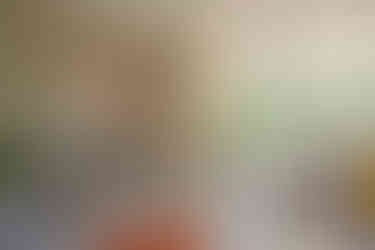Shelf Styling 101
- Tami Brooks
- Nov 10, 2021
- 3 min read
Updated: Nov 20, 2022
Anyone can style a set of shelves. Large built-ins, bookcases, floating shelves, or your new Shelving System. Don't let them overwhelm you. Whether you're a minimalist or maximalist, you can create perfectly styled shelves that match your aesthetic, personality, and style.
Step 1: Pull everything off and choose a Color Theme

Pull everything off. Take a look at what you have. Pick out the pieces that must be stored on these shelves
Selecting a base color concept for your shelving will act as a starting place for determining the items that stay on display vs. get hidden away. Base your color selection on your style, theme of the room, or what makes you happy. If you prefer neutrals and natural tones, choose white, cream, and beige. If you love vibrant and bold colors, opt for primary colors, jewel tones, or add pops of gold and brass. Or blend bold & neutral by grouping items together to create an interesting color block effect. Whatever you prefer, play around with your color choices until you find what speaks to you.
Step 2: Add What Brings you Joy

Curating items to decorate your home can take time. Shop Facebook Marketplace, local flea markets, and thrift stores to find interesting items to decorate your shelves with.
Framed art or photos: Choose a few photos that make you smile or artwork you've collected, created, or made by your kids. The art can be bold and bright or minimal and neutral. Whatever speaks to you.
Pottery, stoneware, vases, bowls: Pick these pieces in different textures, shapes, and sizes to add interest.
Books, comics, magazines: Coffee table books, favorites from your collection, comics, magazine editions you can't part with (like every edition of Architectural Digest). If you don't own any books, buy a few from a thrift store or garage sale. Look for books with attractive covers or simply turn them around so that the book's pages show instead of the spine. You can even cover your books with similar paper or fabric for a more cohesive look.
Baskets and storage boxes: Try picking these in different materials and textures — metal, jute, cloth, wire. And secretly stash away other items, too.
Plants, flowers, succulents: These can be real or artificial. No judgment.
Collections: Your collection of little cat statues, McDonald's Happy Meal toys, '80s memorabilia, model cars, vintage signs, or records deserve to be on display. Your shelves are a great place to showcase these pieces.
Other items: Lights, lamps, candles, sculptures, figurines, mirrors, posters … Endless possibilities.
Step 3: Let the Games Begin
There are no real rules here, just guidelines.
Start with your biggest items and place them staggered throughout your shelving system. These items will act as focal points when paired in groups with smaller items.
Find symmetry or pattern. It doesn't have to be perfect, but you want to draw the eye to different parts of each shelf as you look up and down. Place one of your larger items in the upper right corner of the shelving unit, and then on the shelf below, place another one in the center and then one in the left corner below that.
Create groups with smaller items placed around your focal point pieces. Aim to create pairs or vignettes of three for a cohesive, balanced look. Each shelf should have items that are different in size, height, texture, and color.
Leave space. Vary the amount you have on each shelf. If you like a minimalistic look, add more space in between items. If you prefer to add more to your shelves, reduce the distance between objects and add a few more pieces.
Build height where needed by stacking books and placing short items like a candle or plant, ontop.
Step back, adjust, admire. Nothing has to be perfect the first time. Style your shelves. Restyle. Take a week to just stare at it. Restyle it again if you want. Add more. Take away pieces. It's all up to you.

Additional tips:
With shorter shelves, hang a poster or two above. Even a T.V. works!
If you're storing tableware and cookware, use the height rule, vary the colors, and create visual gaps to balance out the heavier pieces.
For bookcases, vary how you stack the books, group different colored books together, or add bold bookends. Remember, styling shelves is a reflection of you. There isn't a right or wrong way to go about it. Follow your instinct and display what you love. It's all about what brings you joy.







Comments